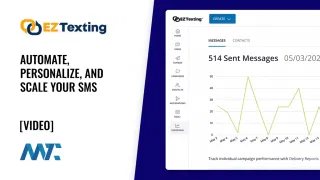Refers to any text message sent from a business application to an individual’s mobile device. Unlike person-to-person (P2P) messaging, where individuals communicate directly, A2P messaging is automated and initiated by a software platform, customer relationship management (CRM) system, or messaging service provider.
A2P messaging is commonly used by businesses and organizations to deliver time-sensitive, informational, or marketing content to customers at scale. Examples include appointment reminders, order confirmations, shipping notifications, two-factor authentication (2FA) codes, customer service alerts, and promotional campaigns.
Because A2P messaging operates at a higher volume and is automated, mobile carriers treat it differently from standard personal messaging. Specific rules, registration requirements, and throughput limits are often designed to manage A2P traffic, prevent spam, and protect consumers.
A2P can be delivered through various messaging channels, including SMS (Short Message Service), MMS (Multimedia Messaging Service), RCS (Rich Communication Services), WhatsApp, Facebook Messenger, and other mobile messaging platforms. However, in the United States, SMS-based A2P messaging is subject to carrier regulations such as 10DLC (10-Digit Long Code), dedicated short codes, or toll-free SMS numbers.
The value of A2P messaging lies in its immediacy and direct reach—most text messages are read within minutes of delivery. Businesses use A2P to increase customer engagement, drive conversions, provide customer support, and improve operational efficiency.
Compliance with carrier guidelines, privacy laws (such as TCPA in the U.S.), and opt-in/opt-out management is essential when implementing A2P messaging strategies to avoid penalties, blocked messages, or brand reputation damage.
